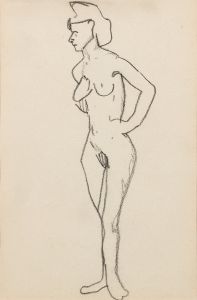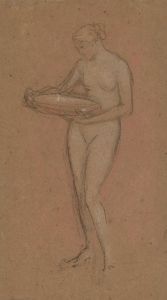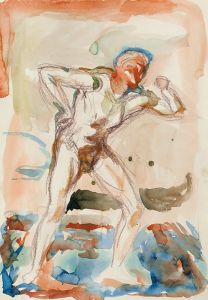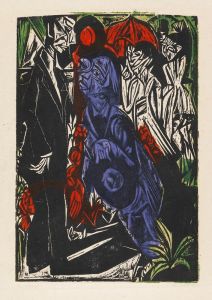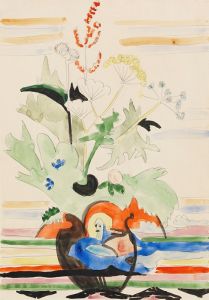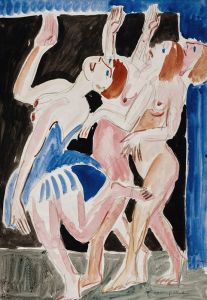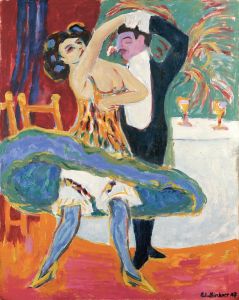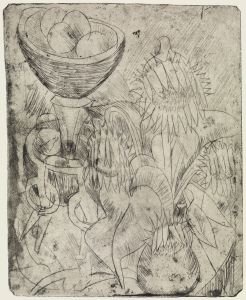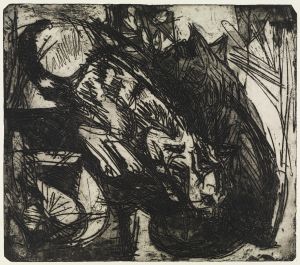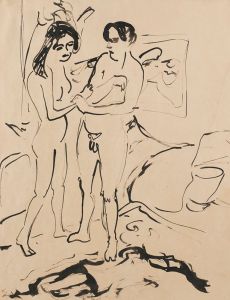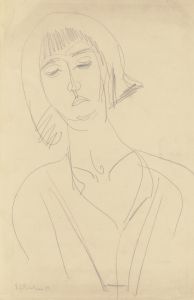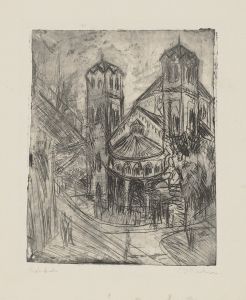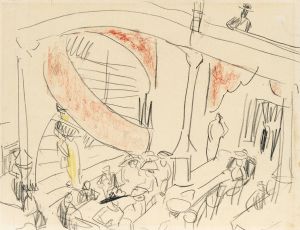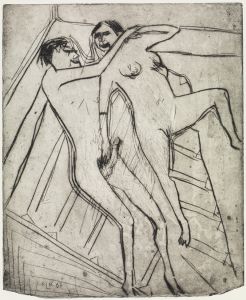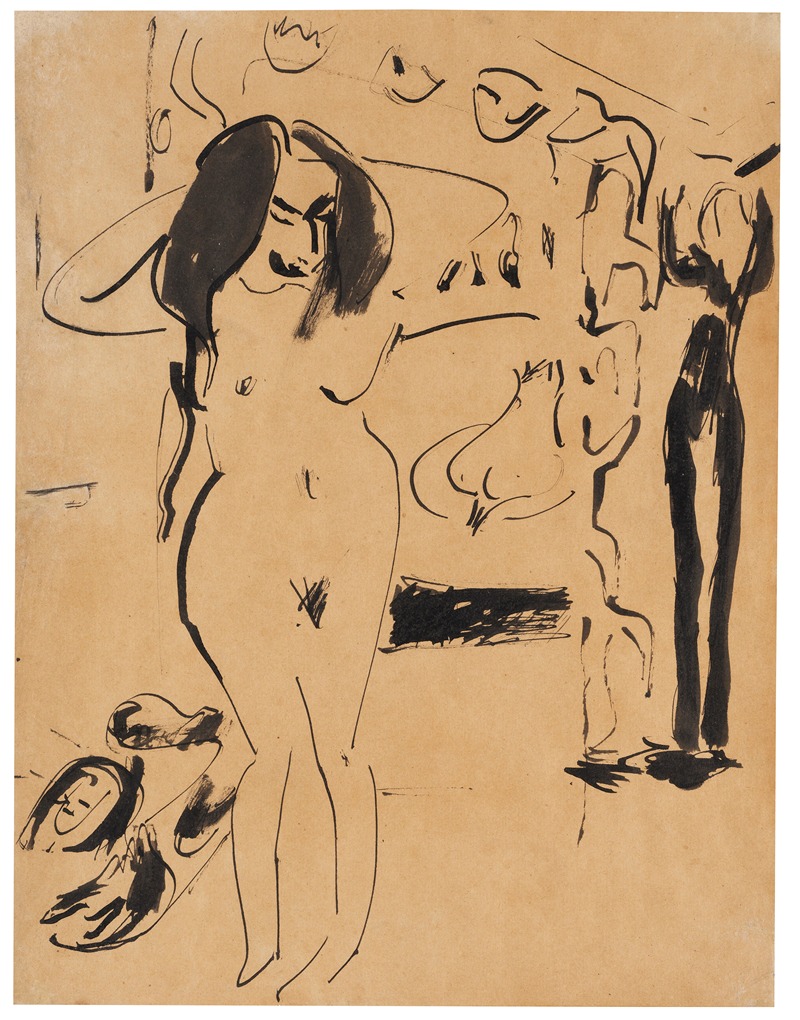
Mädchenakt
A hand-painted replica of Ernst Ludwig Kirchner’s masterpiece Mädchenakt, meticulously crafted by professional artists to capture the true essence of the original. Each piece is created with museum-quality canvas and rare mineral pigments, carefully painted by experienced artists with delicate brushstrokes and rich, layered colors to perfectly recreate the texture of the original artwork. Unlike machine-printed reproductions, this hand-painted version brings the painting to life, infused with the artist’s emotions and skill in every stroke. Whether for personal collection or home decoration, it instantly elevates the artistic atmosphere of any space.
Ernst Ludwig Kirchner was a prominent German expressionist painter and one of the founding members of the artist group Die Brücke (The Bridge), which played a pivotal role in the development of modern art in the early 20th century. Among his notable works is "Mädchenakt," a painting that exemplifies his distinctive style and thematic focus.
"Mädchenakt," which translates to "Female Nude," is a work that reflects Kirchner's interest in the human form and his exploration of the expressive potential of color and line. Kirchner's nudes are often characterized by their bold outlines, vibrant colors, and dynamic compositions, which convey a sense of movement and emotional intensity. This painting is no exception, as it captures the essence of the expressionist movement by emphasizing the emotional and psychological over the realistic and representational.
Kirchner's approach to the nude was influenced by a variety of sources, including non-Western art, which he and his contemporaries admired for its perceived authenticity and directness. This influence is evident in the simplified forms and exaggerated features of the figures in his work. In "Mädchenakt," the figure is rendered with a sense of immediacy and rawness, which challenges traditional notions of beauty and formality in art.
The context in which Kirchner created "Mädchenakt" is also significant. The early 20th century was a period of great social and cultural change, and artists like Kirchner sought to break away from the conventions of the past. Die Brücke, the group he co-founded, aimed to create a new artistic language that was more in tune with the modern world. Their work often featured themes of urban life, nature, and the human body, all depicted with a sense of urgency and emotional depth.
Kirchner's nudes, including "Mädchenakt," can also be seen as a response to the changing attitudes towards sexuality and the body during this time. The early 1900s saw a growing interest in exploring and expressing human sexuality, and artists like Kirchner were at the forefront of this movement. His work often blurs the line between the erotic and the artistic, challenging viewers to reconsider their perceptions of the nude.
The painting's composition and use of color are typical of Kirchner's style. He often employed a vivid palette and bold brushstrokes to create a sense of energy and movement. In "Mädchenakt," the interplay of colors and the dynamic pose of the figure draw the viewer's eye and evoke a visceral response. This technique is a hallmark of expressionism, where the artist's subjective experience and emotional response are prioritized over realistic representation.
"Mädchenakt" is a testament to Kirchner's skill as an artist and his ability to convey complex emotions through his work. It reflects the broader themes of the expressionist movement and offers insight into the cultural and artistic shifts of the early 20th century. Kirchner's exploration of the nude form, his innovative use of color and line, and his engagement with contemporary social issues make this painting a significant piece in the history of modern art.





